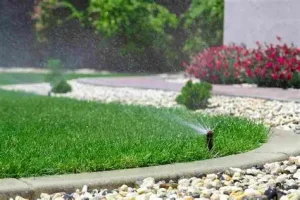Power washing can drastically improve the appearance of exterior surfaces and enhance the overall curb appeal of a home or commercial property. It also eliminates harmful growth and allows for easier stain removal.
For stubborn stains, use a specialized cleaning solution before power washing. This article will cover how to go about power washing properly, including safety precautions. Click here at https://www.certifiedsoftwash.ca/ to know more.

Use the Right Chemicals
Choosing the right chemical to power wash with is important, and not just for safety reasons. Different chemicals are suitable for different jobs, and they must be compatible with the surface you are cleaning. For instance, a degreaser is ideal for oil-based stains because it breaks down the molecules of the stain and makes them easier to wash away. Detergents are also useful for general dirt and grime, as they dissolve it and leave surfaces clean and fresh. Sanitisers are another type of chemical to consider, as they kill bacteria and other organisms, which is crucial for surfaces where hygiene is important.
The best way to determine which chemical is most suitable for a particular job is to check its label. This will provide information about its chemical composition, the surface it is safe to use on, and how much pressure is recommended for its application. When using a commercially available solution, it is essential to follow the manufacturer’s recommendations when mixing it. If you do not, you could end up damaging the surface of whatever material you are washing.
In addition to enhancing the curb appeal of your home, regular power washing can help to extend its lifespan by removing damage-inducing elements. This is particularly important for materials like wood and vinyl, which benefit from regular cleaning to remove harmful substances that can cause decay and deterioration. If you are planning to repaint your house, a thorough cleaning is also a good idea, as it will make the paint adhere better and will remove any mold or mildew growth that may have grown.
Deciding how often you should power wash your house is a complex process that involves assessing many factors, such as local weather conditions, the type of siding on your house, and the amount of biological growth that accumulates in your area. In general, most houses can benefit from being power washed every one or two years, but this varies depending on environmental conditions and your home’s specific needs. For instance, a home in an area with a lot of salt air or frequent bad weather will likely require more frequent washing to prevent the build-up of grime.
Test the Nozzles
Using the wrong nozzle on your pressure washer can cause damage to surfaces and even cut skin. This could result in uneven or incomplete cleaning and may require you to repeat the power washing process. For this reason, it is important to test the surface you are cleaning and select the proper nozzle for the job.
The nozzles on most pressure washers are designed to produce different spray patterns and strengths. Some of the more common nozzles include the green tip, which produces a 25-degree spray; this is perfect for general cleaning and washing cars. A red tip, on the other hand, produces a 40-degree spray and is ideal for cleaning mildew.
Other nozzles are designed for more specific jobs, such as the impactor or deicer-degreaser. This nozzle typically includes one forward jet, three or six rear jets, and is designed to penetrate blockages and slice ice and grease into manageable segments for removal and flushing.
The proper nozzle for a specific project is determined by the maximum pump and engine (or motor) ratings of the equipment. This information can be found in the manufacturer’s specifications or on a chart provided by the pressure washer vendor. Contractors should always use a nozzle that is rated for the maximum gpm and psi of their machine to avoid creating maintenance problems for themselves.
Inconsistent distance between nozzle and surface and varying water flow are common causes of poor or uneven power washing results. These issues can also occur due to clogged nozzles, so it’s important to maintain consistent pressure and water flow, as well as clean the nozzle regularly during use.
To achieve better cleaning results, start by prepping the walkway you’re planning on power washing. Clear away any debris that might get swept into the water and protect plants or grass near the walkway. Then, choose the right quick connect nozzle for the task at hand and stand at a safe distance (3 to 4 feet) from the fence. Finally, move the nozzle around the walkway with smooth, sweeping motions to evenly cover the surface and overlap each pass slightly.
Set Aside the Right Amount of Time
Whether it’s at your home or office, power washing is an effective cleaning method that can restore surfaces and enhance the overall look of your property. However, it’s important to note that it can also cause damage if you don’t use the right technique and safety precautions.
Power washing, also known as pressure washing, is the process of using a high-powered water spray to clean exterior surfaces such as walls, driveways, and decks. This type of cleaning is effective for a variety of reasons, including eliminating dirt, mildew, mold, and stains from various outdoor surfaces. Moreover, it’s an ideal way to remove harmful organisms such as weeds and moss that can negatively affect air quality.
It’s important to note that power washing requires the proper equipment and skills to be successful. In addition to a powerful water sprayer, you’ll also need the proper detergents and cleaning solutions. The best option is to choose a specialized cleaner that’s designed for the type of surface you’re cleaning, which can be purchased at most hardware stores. You should also test the surface to determine the appropriate nozzle and pressure settings for the most effective results.
In addition to using the proper chemicals, it’s also important to set aside enough time for your project. Depending on the size of your space and the amount of grime, it may take longer to power wash than you would expect. It’s important to allow enough time for the water to soak in and avoid scrubbing too hard, which can cause damage to your surface or even cause it to crack. Additionally, if there are any problems with your surface such as loose siding or a broken window that might get worse under the force of a pressure washer, it’s best to fix them before you start washing.






